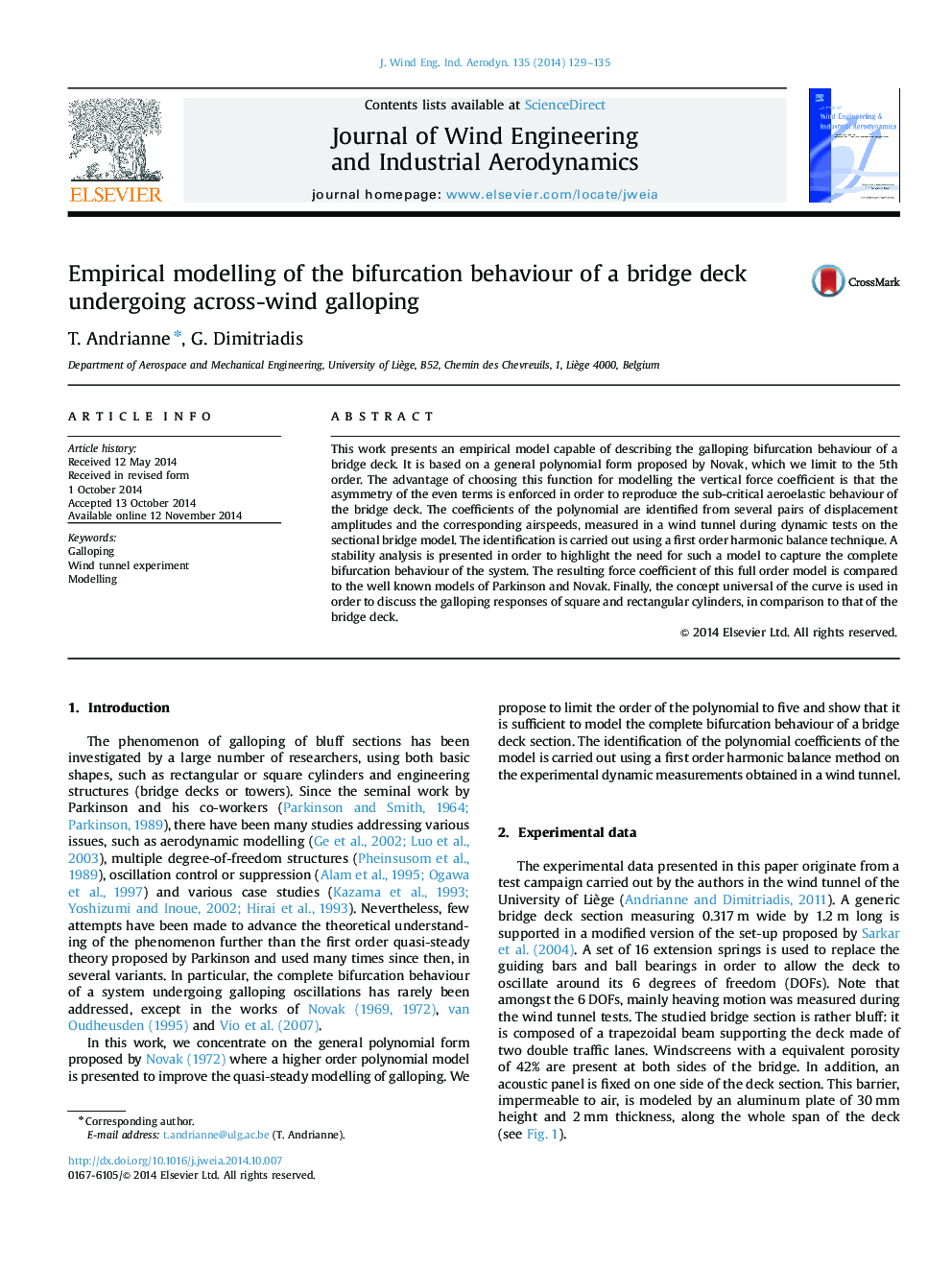| Article ID | Journal | Published Year | Pages | File Type |
|---|---|---|---|---|
| 6757674 | Journal of Wind Engineering and Industrial Aerodynamics | 2014 | 7 Pages |
Abstract
This work presents an empirical model capable of describing the galloping bifurcation behaviour of a bridge deck. It is based on a general polynomial form proposed by Novak, which we limit to the 5th order. The advantage of choosing this function for modelling the vertical force coefficient is that the asymmetry of the even terms is enforced in order to reproduce the sub-critical aeroelastic behaviour of the bridge deck. The coefficients of the polynomial are identified from several pairs of displacement amplitudes and the corresponding airspeeds, measured in a wind tunnel during dynamic tests on the sectional bridge model. The identification is carried out using a first order harmonic balance technique. A stability analysis is presented in order to highlight the need for such a model to capture the complete bifurcation behaviour of the system. The resulting force coefficient of this full order model is compared to the well known models of Parkinson and Novak. Finally, the concept universal of the curve is used in order to discuss the galloping responses of square and rectangular cylinders, in comparison to that of the bridge deck.
Related Topics
Physical Sciences and Engineering
Energy
Renewable Energy, Sustainability and the Environment
Authors
T. Andrianne, G. Dimitriadis,
